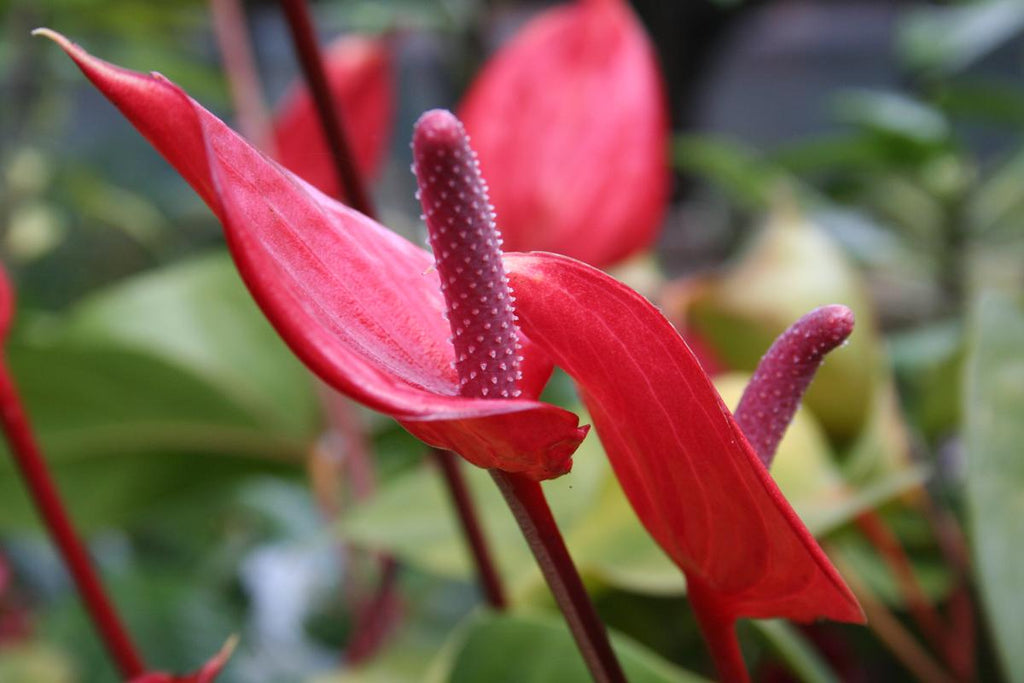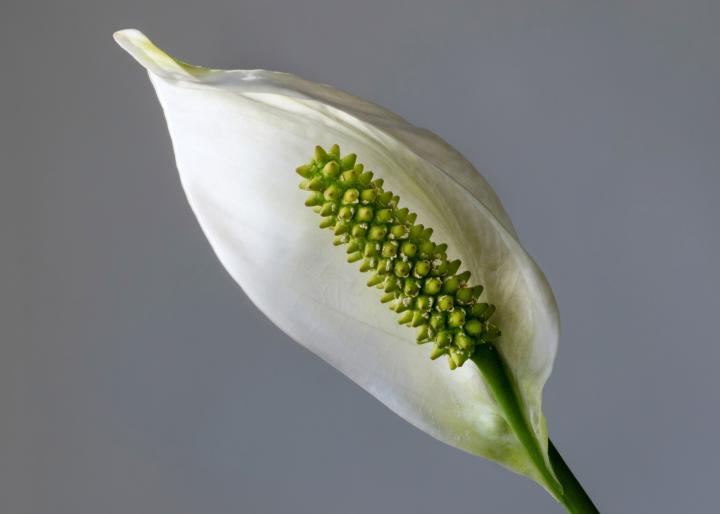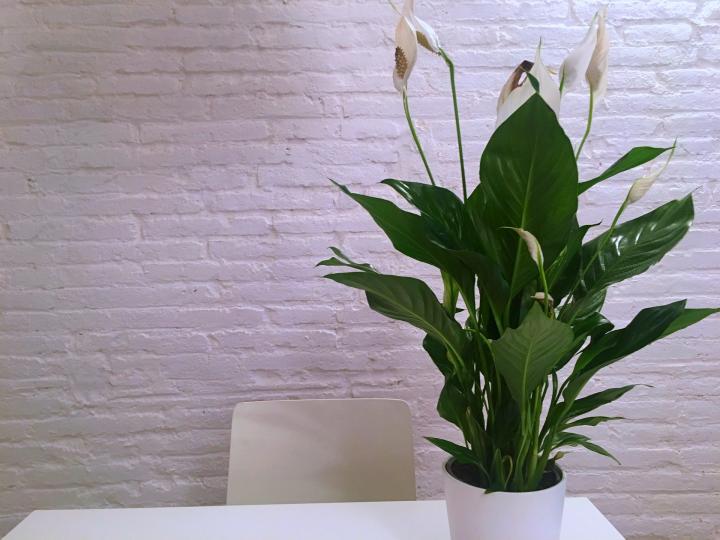
Peace lilies are one of the most common houseplants because they’re easy to grow and beautiful, too! Here’s everything you need to know about caring for a peace lily in your home.
ABOUT PEACE LILIES
Peace lilies are tropical, evergreen plants that thrive on the forest floor, where they receive dappled sunlight and consistent moisture. Replicating these conditions in the home is the key to getting your peace lily to be happy and healthy.
With enough light, peace lilies may produce white to off-white flowers in the early summer and continue to bloom throughout the year.
Most household varieties of peace lily grow up to 16 inches tall, but larger outdoor cultivars can reach 6 feet in height. Peace lilies are not cold-hardy plants, so they may only be grown outdoors in warm, humid climates.
IS THE PEACE LILY PLANT POISONOUS?
Yes. All parts of the peace lily plant contain calcium oxalate—a substance that may cause stomach and respiratory irritation if ingested in large amounts. Keep peace lilies out of reach of small children and pets.
PLANTING
HOW TO PLANT, TRANSPLANT, AND DIVIDE PEACE LILIES
- Use a well-draining, all-purpose potting soil.
- Re-potting annually in the spring is good for the peace lily, as the plant will appreciate the refreshed soil.
- Eventually, the peace lily may grow too large for its pot, at which point it can be divided. Remove the plant from its pot and split it into smaller plants, being sure to leave several leaves per clump. The peace lily grows from rhizomes, so it can tolerate a bit of tough treatment during dividing.
CAN PEACE LILIES BE GROWN IN WATER?
Yes, peace lilies can be grown in water; they are often sold in vases without any soil. Ideally, the base of the plant should be suspended above the water line, either by a specially-made insert or a layer of small stones. This allows the roots to grow into the water, but keeps the base of the plant and its leaves from being constantly wet, which can cause rot.
CARE
HOW TO CARE FOR A PEACE LILY
- Keep the soil moist, but do not over water. Peace lilies can tolerate short periods of dry soil, but their leaves will start to brown if neglected for too long.
- Peace lilies are sensitive to chemicals commonly found in tap water, such as fluoride, which may cause brown leaf tips. Use filtered, room-temperature water, if possible.
- Peace lilies enjoy high humidity. Misting their leaves or placing their pot atop a moistened tray of gravel can help to increase humidity.
- Peace lilies are not heavy feeders, so fertilize only occasionally. To encourage spring and summer growth, fertilize every 6 weeks or so with a balanced houseplant fertilizer starting in late winter.
- Peace lilies are a tropical plant, so keep them in temperatures above 16°C and away from cold, drafty windows. They do best in temperatures upwards of 21°C.
- Keep these plants out of direct afternoon sunlight, but in a well-lit area. An east-facing window is ideal, as they will be exposed to the warmth of the morning sun but avoid the intensity of mid-day rays.
HOW TO GET PEACE LILIES TO FLOWER
- Most often, if no flowers are appearing, the plant is not getting enough light. Peace lilies are very tolerant of low light, but low light does not mean no light! To encourage flowering, move the plant to a brighter location, where it will receive bright, indirect light.
- Green flowers, weak-looking flowers, or a general lack of flowers can be caused by improper fertilizing. In the case of green flowers, cut back on fertilizing. In the case of weak-looking flowers or a lack of flowers, try switching to a fertilizer made for flowering plants. This type of fertilizer will have a higher amount of phosphorous, which plants need for blooming.
PESTS/DISEASES
- Brown leaf tips are commonly caused by excessive light, over-fertilization, or lack of water and/or low humidity. Keeping the plant on a tray of moistened gravel or misting the leaves can help to increase humidity.
- Yellow leaves may be caused by overwatering, underwatering, or old age (of the leaf).
- Scale and mealybugs will happily take up residence on the plant, if given the opportunity. A thorough wipe-down of leaves with soapy water or insecticidal soap can be effective at stopping them, though repeated applications will be necessary.
RECOMMENDED VARIETIES
Specialty varieties of peace lilies are not easy to come by in most garden centers; you will likely need to order them from an online source.
- Spathiphyllum wallisii is a smaller peace lily, reaching only 12 inches tall.
- ‘Petite’ is smaller still, at approximately 8–10 inches.
- ‘Sensation’ is the largest variety available, capable of growing up to 4–6 feet in height and width.
- ‘Domino’, is a medium-size variety with attractively variegated leaves.
- ‘Mojo Lime’, which has lime-green foliage, is another medium-size peace lily.
WIT & WISDOM
- In NASA studies, it was discovered that peace lilies can help improve air quality, removing formaldehyde, benzene, and carbon monoxide from the surrounding air. Read more about air-purifying houseplants!
- The peace lily is said to have gotten its common name from its white flowers, which rise timidly above its green foliage and resemble small, white flags of peace.
- Despite the peace lily’s common name, it is not related to true lillies at all.
- The plant’s interesting blooms are also the source of its Latin name, Spathiphyllum, meaning “spathe-leaf.” The flowers consist of the spathe (the white, sheath-like leaf) and the spadix (the spike of small flowers located within the spathe).

A peace lily’s flower consists of a spathe (white sheath) and spadix (green or off-white spike of flowers).
Also read: Benefits of Using Citrus Peel in Your Garden
Also read: Top 10 summer flowers in India



